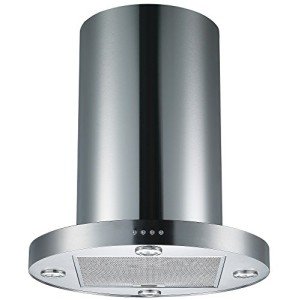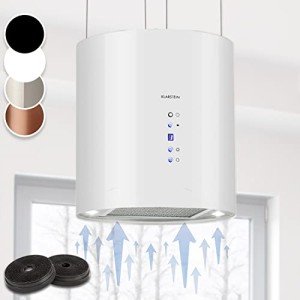Who Is Responsible For A Island Hob Budget? 12 Best Ways To Spend Your…
페이지 정보
작성자 Wallace 댓글 0건 조회 5회 작성일 25-05-19 15:32본문
The Island Vent Hood: A Comprehensive Guide to Choosing and Installing the Perfect Kitchen Feature
In modern kitchen style, the island vent hood has ended up being a vital focal point, seamlessly integrating performance with aesthetic appeal. With the rise of open-concept home, where kitchens are integrated with dining and living locations, the value of a well-designed ventilation system has ended up being critical. This article explores what an Island Hoods Kitchen vent hood is, the various types offered, essential features to think about, setup ideas, and FAQs surrounding this important kitchen component.
What is an Island Vent Hood?
An island vent hood is a kitchen island extractor hood ventilation system designed to be set up above an island cooktop or range. Unlike conventional wall-mounted hoods, island hoods are suspended from the ceiling, supplying a clear view of the cooking area while effectively eliminating smoke, steam, and smells from the kitchen. This makes island island Hoods kitchen hoods an attractive alternative for open designs while guaranteeing a tidy and comfy cooking environment.
Types of Island Vent Hoods
When selecting an island vent hood, it is crucial to comprehend the numerous types available in the market. Here are the main categories:

| Type | Description |
|---|---|
| Ducted | Ventilation is directed outside, supplying the best air quality by expelling air and odors. |
| Ductless | Uses filters to clean up the air and recirculate it back into the kitchen; simpler to set up. |
| Convertible | Can operate in both ducted and ductless modes, offering flexibility in installation. |
| Under-Cabinet | Mounted under cabinets; typically lower output, suitable for smaller kitchen designs. |
Key Features to Consider
Picking the right island vent hood involves a number of vital aspects. Here are the vital features to think about:
- Size: The hood ought to be at least as broad as the cooktop. Ideally, it needs to extend 6 inches on either side for ideal performance.
- CFM Rating: The Cubic Feet per Minute (CFM) ranking suggests the hood's ventilation power. Greater CFM is necessary for heavy cooking, while lower CFM may suffice for lighter use.
- Noise Level: Measured in sones, a lower sone ranking shows a quieter operation. A peaceful fan is especially crucial in open-concept spaces.
- Lighting: Many island hoods come equipped with integrated lighting. LED lights are popular for their energy effectiveness and longevity.
- Design: Island vent hoods come in various designs, including modern-day, traditional, and commercial. Choose a hood that complements the general kitchen aesthetic.
Installation Tips
Installing an island vent hood can be a complex process. Here are some vital tips to help with the setup:
- Check local codes and regulations to make sure compliance with setup height and electrical requirements.
- Identify the hood's height: The top of the hood must be 30 to 36 inches above the cooking surface area, depending upon the producer's recommendations.
- Protect the installing bracket: Ensure that the mounting bracket is properly anchored to the ceiling to support the weight of the hood and motors.
- Ductwork factors to consider: If using a ducted system, guarantee proper duct size and layout for optimal airflow. Prevent sharp bends in ducting, which can hamper air movement.
- Electrical setup: Ensure that the electrical connections fulfill your hood's power requirements, and consider working with a certified electrician for complicated setups.
Expense Considerations
The expense of an island vent hood can range considerably depending upon functions, materials, and brand. Below is a breakdown of potential costs connected with acquiring and setting up these hoods:
| Cost Element | Approximated Range |
|---|---|
| Basic Models | ₤ 300 - ₤ 600 |
| Mid-range Models | ₤ 600 - ₤ 1,200 |
| High-End Models | ₤ 1,200 - ₤ 3,000+ |
| Installation Costs | ₤ 200 - ₤ 500 |
Regularly Asked Questions
1. How typically need to I clean my island vent hood?Regular cleaning is recommended, with deep cleansing at least once a month, particularly if you prepare regularly. 2. Can I install an island extractor fans vent
hood myself?While it is possible, expert
setup is suggested for security and ideal efficiency, particularly with ductwork and electrical connections. 3. Are ductless island extractor fan hoods effective?Ductless hoods can efficiently filter
smoke and smells, however they might not be as powerful as ducted models. They need regular filter replacements and upkeep. 4. What kind of upkeep does an island vent hood require?Regular cleansing of filters, lights, and hoods, in addition to checking for any wear and tear on motors or ductwork is crucial for preserving efficiency
. 5. What kind of filters ought to I use?Most island extractor fans vent hoods utilize aluminum or charcoal filters. Aluminum filters are recyclable, while charcoal filters require to be replaced
periodically. The island vent hood is a vital component of a modern-day kitchen, offering exhaustion of undesirable smells and making a striking style declaration. Selecting the right type, understanding necessary
features, and sticking to appropriate installation methods will ensure ideal performance and durability of this kitchen home appliance. Whether you are a seasoned chef or a periodic home cook, the best island vent hood can dramatically boost your cooking experience. By following the standards and factors to consider outlined in this post, house owners can make educated choices and take pleasure in a cleaner and more pleasurable cooking environment.
댓글목록
등록된 댓글이 없습니다.
